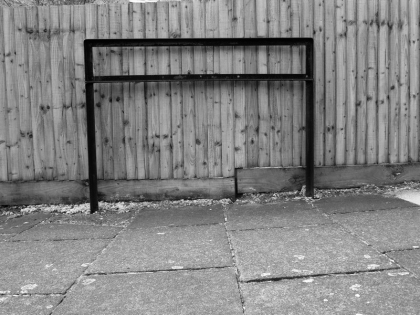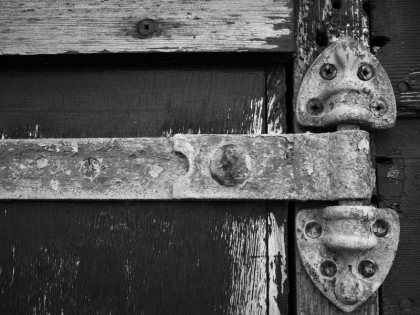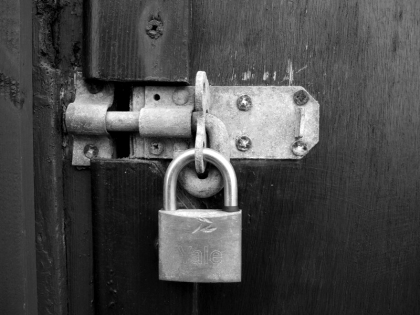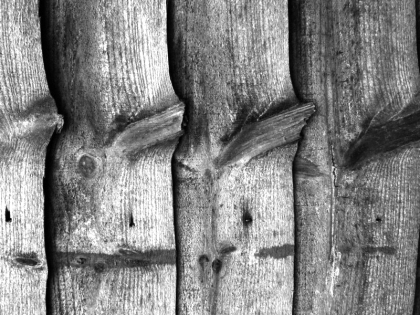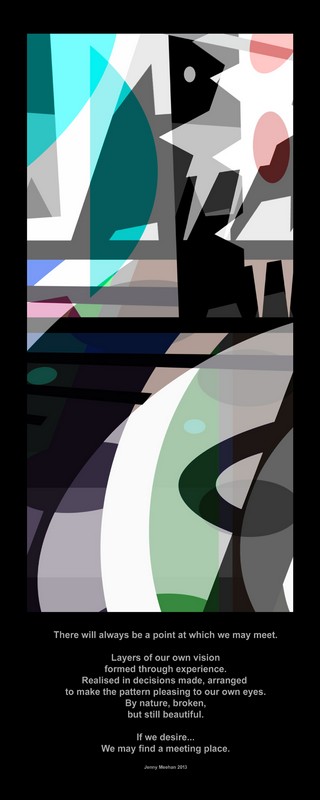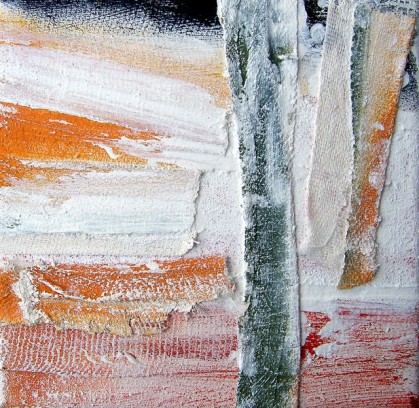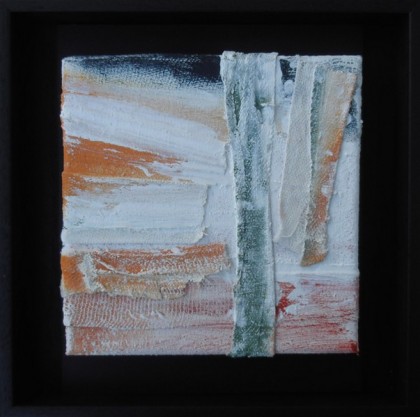
jenny meehan fine artist british female
Image above is “Figure on Uncertain Ground” © Jenny Meehan.
Art Journal Post 2016
Figure On Uncertain Ground
This image was created by making a seated figure out of black plasticine, taking a image of this, and then digitally collaging it on top of two translucent images taken from sections of two of my paintings “Debris” and “Rock Pool”. ” Definition: A ground or primer, is the background surface on which you paint. It is usually a coating which physically separates your painting from the support. It is the foundation of a painting, applied onto the raw canvas, paper, or other support. I have described to you how this work was created to allay the uncertainty. Yet the body, both material and immaterial, is floating, paradoxically with a sense of stability. 24 x 34cm #1/25 Limited Edition with image size of 13 x 20cm with slight variations in colour within edition Framed in a black frame

pen and ink on torn paper unique print by jenny meehan
Pen and Ink on a Torn Strip © Jenny Meehan. All Rights Reserved
Pen and Ink on a Torn Strip
I don’t wish to offer any text for this, except for this. I have created this work to be my own recognition that hate violence is a prevalent and deadly issue in our world. It is also a physical expression of my prayers for healing, recovery, and improvement in our broken world.
24x34cm external frame size. Unique Digital Print on Paper Framed in a black frame with a black mount and glazed.
Knee, Knee, Knee 2016
My knee, poor knee. A wake up call to loose weight, and the weight is coming off. But the pain is near constant and my introduction to the world of chronic pain suffering seems to be just too long. It has been 16 months since the agonising introduction, which came on holiday in August 2015. I insisted on carrying on walking even though the ache in my right knee screamed at me, and that was the start of an osteoarthritis “flare up” that never quite flared down. But that right knee, since my full body weight landed on it in 2010, was never quite the same again. Such a mistake not to go to A&E. I think I did not go because of being in shock and not thinking straight.
Feeling like a caged bird.
I go for a fifteen minute walk, but I pay for it later.
I cut down standing time in the day to just one or two hours maximum, and tried cutting out my exercise session, but that makes no difference.
Most nights I have pain.
But I can swim, and I love this. If only I could swim around all the time.
I can write, which is good.
I can listen to the wise words which lovely people around me gift me with.
I can hope that it gets treated surgically…
And that makes things better, in the long run.
I do have a pair of socks with “walk” on the soles.
Thankfully, I can now look forward to a knee replacement. This offers some hope of improvement at least. Nothing guaranteed of course, and surgery always involves risk. But a risk I am happy to take, for chance of even a moderate improvement. What a reality check these last months have been. How important it is not to overburden ones joints with excess weight. Weight it was not designed to carry. But I have been unkind to myself in the past. Now I can train myself to be kind to my frame and burden it less with excess weight.
Interesting read below…. quoted from:
The Nature of the “In-Between”
in D.W. Winnicott’s Concept of Transitional Space
and in Martin Buber’s das Zwischenmenschliche
Laura Praglin
Here is some of the introduction, for a little background:
Introduction
Martin Buber (1878-1965), German Jewish social philosopher and theologian, and D.W. Winnicott
(1896-1971), British pediatrician and psychoanalyst, portray in vibrant detail the reality of
the “in-between”. Although contemporaries, they were separated by country and profession, and
did not know each other. Yet both set forth in their writings remarkably complementary views
concerning “in-between space”–the transitional area, to Winnicott, or das Zwischenmenschliche to
Buber. This is a meeting-ground of potentiality and authenticity, located neither within the self
nor in the world of political and economic affairs. In this space, one finds the most authentic
and creative aspects of our personal and communal existence, including artistic, scientific, and
religious expression.
The creative and moral implications of the “in-between” continue to resonate deeply,
and to claim the attention of recent scholars. Decades after their original contributions, we
witness an ongoing engagement of Buber and Winnicott within a variety of interdisciplinary
contexts. Fields as varied as philosophy, theology, politics, health care, communication, gender
studies, and psychology continue to employ the work of these two thinkers when grappling with
the themes of intersubjectivity, dialogue, and moral responsibility.”
And the section which interests me most, as a creative artist:
“Art and the Creative Process
For Winnicott, life itself is always expressed in symbol, for it plays an integral part in the formulation
and realization of transitional space. Yet, paradoxically, not even an artist creates entirely
new symbols and forms, only, like the child, discovers them. As a result, Winnicott remarks,
“creative living involves, in every detail of its experience, a philosophical dilemma–because, in
fact, in our sanity we only create what we find.”
Such creativity, declares Winnicott–whether artistic, religious, or scientific—is “the doing
that arises out of being.” Using Winnicott’s terms, we may say that the artist, for example,
expresses his/her being by constructing a framed, transitional area in which creativity finds expression.
The artist creates and recreates unconscious processes, and presents these in a manner
which resonate with our shared sense of symbols. By articulating these shared symbols, the artist
invites us into this intermediate area of experiencing. The poet, for example, chooses symbols
and images of a common language, and finds comfort not available in herself. S/he invites others
into this in-between space, beyond the merely private, subjective, or psychological, which serves
as a resting place between inner and outer reality, between psyche and culture. Through art,
therefore, one can move from the private to the social world. Readers find meaning as well, because
they now share in the capacity to articulate experience. Creative expression–through art,
philosophy, religion or mathematics—may thus resolve situations, and allow for new possibilities.
In this way, it is like the child’s experience in imaginative play.
Buber seems to agree that creativity and the discovery of form also occur in the realm
of the “in-between”. Maurice Friedman suggests that Buber views “a work of art is not the
impression of natural objectivity nor the expression of spiritual subjectivity. It is the witness of
the relation between the human substance and the substance of thing. Art is “the realm of ‘between’
which has become a form”: In the creative process, the artist discovers the potentialities
of form, as s/he encounters that which is over against the self. But form itself crystallizes into
structure, and thus non-immediacy:
[The artist] banishes it to be a ‘structure’. The nature of this ‘structure’ is to be freed for a timeless
moment” by meeting the work of art again, lifting the ban of distance or crystallization, and
clasps the form.”
As said, all the above is quoted from: The Nature of the “In-Between”
in D.W. Winnicott’s Concept of Transitional Space
and in Martin Buber’s das Zwischenmenschliche
Laura Praglin
and the full text may be read at: http://www.uni.edu/universitas/archive/fall06/pdf/art_praglin.pdf
WOW..How wonderful to read it put so clearly…The words have brought clarity to my own inclinations and floating feelings and ideas… So glad to have found this.
It is the witness of the relation between the human substance and the substance of thing. Art is “the realm of ‘between’ which has become a form”.
I could never articulate, or rather define how things are for me in painting so well. Glad other minds can do this!
What a find!
“The poet, for example, chooses symbols
and images of a common language, and finds comfort not available in herself. S/he invites others
into this in-between space, beyond the merely private, subjective, or psychological, which serves
as a resting place between inner and outer reality, between psyche and culture. Through art,
therefore, one can move from the private to the social world. Readers find meaning as well, because
they now share in the capacity to articulate experience.”
“The Realm of Between” Painting by Jenny Meehan

“The Realm of Between/Pushing it a bit” abstract lyrical expressionist british paintings jenny meehan
Thinking on this has clarified for me, among other things, my love of double titles for my work, as above, for example with “The Realm of Between/Pushing it a bit”. To have two titles introduces a space between the concepts. It helps to bring an awareness that the painting cannot be summed up, or encompassed, by language, which I like. That is often the problem with titles. However, it is nice to suggest to others something of the thinking and reflection, of the approach maybe I have had, and people are interested. I always feel disappointed when paintings are titled “untitled”! But to allude to any sense of the inbetwee-ness is good.”
It reminds me of what I have read and thought of above, the “transitional space” which though it is not a space between one set of words and another, rather:
“a resting place between inner and outer reality, between psyche and culture.”
and
“the capacity to articulate experience.”
in that;
“the artist, for example, expresses his/her being by constructing a framed, transitional area in which creativity finds expression. The artist creates and recreates unconscious processes, and presents these in a manner
which resonate with our shared sense of symbols. By articulating these shared symbols, the artist
invites us into this intermediate area of experiencing.
That’s a good space, a good place.
Also my recent clarity on defining myself (for the purposes of publication on the internet) as a “Painter-Poet and Artist-Author”. Not only does it have a nice alliteration, always pleasing from a language perspective, but it does manage to encompass both the written and the visual aspects of my creative practice, which I do see as holding a very important and dynamic relationship. And it seems to me that the space between the two is also a place of dynamic tension and creative potential. Hard as it is to articulate with words, there is a kind of parallel or concurrent-ness which exists between word and image in what I do artistically.
In the end, it’s not about defining anything, but opening up experience. Such is the purpose of this meandering discourse. Whatever I write, think, and say about what I do, for the seer of one of my paintings it will evoke completely something unique for them, thankfully.
“Art is “the realm of ‘between’ which has become a form”
Thoughts on Changing Style for an Artist
I have been thinking about my changing style of painting, and am rather amazed as I see my painting go through different phases. It is as if I am watching it and don’t really have control over what is happening. Though clearly I do, because it is me that makes the choices. So there is partial control, just limited awareness! It is very easy for artists to get screwed up about their work and where it is going, or rather, maybe we just get anxious about where it is taking us and fearful. One of the good things about not being represented by a gallery is that there is no pressure to produce the same type of work in order to meet expectations. Or classifications. Or definitions. Or all those “tions”! Looking at an artist, for example, Helen Frankenthaler, when looking over the evolution of her work, the process of development can be seen, and the value of letting it happen appreciated. This is from https://en.wikipedia.org/wiki/Helen_Frankenthaler
“As a whole, Frankenthaler’s style is almost impossible to broadly characterize. As an active painter for nearly six decades, she went through a variety of phases and stylistic shifts.[11] Initially associated with abstract expressionism[12] because of her focus on forms latent in nature, Frankenthaler is identified with the use of fluid shapes, abstract masses, and lyrical gestures.[8][13] She made use of large formats on which she painted, generally, simplified abstract compositions.[14] Her style is notable in its emphasis on spontaneity, as Frankenthaler herself stated, “A really good picture looks as if it’s happened at once.” [6]
Frankenthaler’s official artistic career was launched in 1952 with the exhibition of Mountains and Sea.[15] Throughout the 1950s, her works tended to be centered compositions, meaning the majority of the pictorial incident took place in the middle of the canvas itself, while the edges were of little consequence to the compositional whole.[11] In 1957, Frankenthaler began to experiment with linear shapes and more organic, sun-like, rounded forms in her works.[8] In the 1960s, her style shifted towards the exploration of symmetrical paintings, as she began to place strips of colors near the edges of her paintings, thus involving the edges as a part of the compositional whole. With this shift in composition came a general simplification of Frankenthaler’s style.[11] She began to make use of single stains and blots of solid color against white backgrounds, often in the form of geometric shapes.[8] Beginning in 1963, Frankenthaler began to use acrylic paints rather than oil paints because they allowed for both opacity and sharpness when put on the canvas.[9] By the 1970s, she had done away with the soak stain technique entirely, preferring thicker paint that allowed her to employ bright colors almost reminiscent of Fauvism. Throughout the 1970s, Frankenthaler explored the joining of areas of the canvas through the use of modulated hues, and experimented with large, abstract forms.[11] Her work in the 1980s was characterized as much calmer, with its use of muted colors and relaxed brushwork.[8]”
Also Different Strands…
Some artists also find allowing different strands to develop in their work beneficial. Using different materials will result in very different work. I focus most on my paintings on my website jamartlondon.com, but have another strand of mostly black and white work, which is a mixture of digital collage and physical collage which has been steadily developing alongside my non objective painting. “Pen and Ink on a Torn Strip” and “Figure on Uncertain Ground” which I posted at the outset of this post are examples of this work. As I have developed and grown more comfortable with the insecurities which come with throwing myself into my work while simultaneously not having a clue about what will happen, I have become more accepting of diversity in my output, and it is the applying of my mind in reflecting on the work in progress, thoughtful consideration with a lot of pausing, and a lot of retrospective examination, which prove to most influential in determining what happens next I think.
Helen Frankenthaler Quotes
Helen Frankenthaler:
“A really good picture looks as if it’s happened at once. It’s an immediate image. For my own work, when a picture looks laboured and overworked, and you can read in it—well, she did this and then she did that, and then she did that—there is something in it that has not got to do with beautiful art to me. And I usually throw these out, though I think very often it takes ten of those over-labored efforts to produce one really beautiful wrist motion that is synchronised with your head and heart, and you have it, and therefore it looks as if it were born in a minute.”
“In relations with people, as in art, if you always stick to style, manners, and what will work, and you’re never caught off guard, then some beautiful experiences never happen.”
Here is a link to one of my favourite paintings by Helen Frankenthaler, Interior Landscape 1964…
https://www.wikiart.org/en/helen-frankenthaler/interior-landscape-1964
There is a selection of other paintings on that page also.
Christmas Design/Print “Holy, Holy, Holy”
This is not new, but I still love it for Christmas time!
This is my card to you for this year and probably for every year to follow!

all saints church angels project design angel abstraction holy holy holy image jenny meehan
Help me pay for materials and continue my art working
Canvas, paint, all costs money. Exhibitions charge submission fees. Travel costs money.
How to Support Jenny Meehan
If you like my art working and would like to support me you can! Pop
Paypal.me/jennymeehan
in your browser and follow instructions. There’s no option for me to thank you via the PayPal Me process but do contact me via contact form and let me know if you have gifted me so I can thank you.
You can buy my original paintings… Just contact me via the contact form. Price range is between £250 and £400.
Also available via redbubble, the well known print on demand marketplace, you can buy unsigned prints on many substrates.
Take a look here, any problems locating it feel free to contact me via the contact page on this Art Journal/ Artist Blog
It’s also a good place to get a feel for quite a big strand of my creative artworking. Any problems locating what you want, feel free to contact me via the contact page on this Art Journal/ Artist Blog jennyjimjams.redbubble.com
I have mostly the abstract, flat colour geometrical art in Redbubble as it makes nice prints. I selected work for that platform in order to help my work become more accessible. There’s also a lot of surface pattern designs. I find creating patterns very therapeutic!
The main style of my original painting is Lyrical Abstraction/Abstract Expressionism. I also enjoy working with black and white photography tending towards pictorialism. I frequently use collage and digital collage.
TO FOLLOW THIS ARTIST’S BLOG SIMPLY GO TO THE RIGHT HAND COLUMN, LOCATE THE “FOLLOW” BOX AND POP IN YOUR EMAIL ADDRESS. YOU WILL THEN RECEIVE MONTHLY UPDATES.
Jenny Meehan is a painter-poet, artist-author and Christian contemplative based in East Surrey/South West London. Her interest in Christ-centred spirituality and creativity are the main focus of this artist’s journal, which rambles and meanders on, maybe acting as a personal (yet open to view) note book as much as anything else. If you read and enjoy it, this would be an added bonus.
Jenny Meehan BA Hons (Lit.) PGCE also occasionally offers art tuition for individuals in person and online.
Jenny Meehan works mainly with either oils or acrylics creating both abstract/non-objective paintings and also semi-abstract work. She also produces representational/figurative artwork, mostly using digital photography/image manipulation software, painting and drawing. Both original fine paintings and other artwork forms and affordable photo-mechanically produced prints are available to purchase.
Jenny Meehan exhibits around the United Kingdom mostly.
You could follow the Jenny Meehan Contemporary Artist’s Journal at WordPress and keep informed that way.
Note About Following Jenny Meehan Contemporary Artist’s Journal
TO FOLLOW THIS ARTIST’S BLOG SIMPLY GO TO THE RIGHT HAND COLUMN, LOCATE THE “FOLLOW” BOX AND POP IN YOUR EMAIL ADDRESS. YOU WILL THEN RECEIVE POSTS.
COPYRIGHT INFORMATION
All content on this blog, unless specified otherwise, is © Jenny Meehan. Unauthorized use and/or duplication of this material without express and written permission from this blog’s author and/or owner is strictly prohibited. Excerpts of writing and links may be used, provided that full and clear credit is given to Jenny Meehan with appropriate and specific direction to the original content. Images may not be used without permission under any circumstances.
How to Support Jenny Meehan
If you like my art working and would like to support me you can! Pop
Paypal.me/jennymeehan
in your browser and follow instructions. There’s no option for me to thank you via the PayPal Me process but do contact me via contact form and let me know if you have gifted me so I can thank you.
You can buy my original paintings… Just contact me via the contact form. Price range is between £250 and £400.
Also available via redbubble, the well known print on demand marketplace, you can buy unsigned prints on many substrates.
Take a look here, any problems locating it feel free to contact me via the contact page on this Art Journal/ Artist Blog
It’s also a good place to get a feel for quite a big strand of my creative artworking. Any problems locating what you want, feel free to contact me via the contact page on this Art Journal/ Artist Blog jennyjimjams.redbubble.com
I have mostly the abstract, flat colour geometrical art in Redbubble as it makes nice prints. I selected work for that platform in order to help my work become more accessible. There’s also a lot of surface pattern designs. I find creating patterns very therapeutic!
The main style of my original painting is Lyrical Abstraction/Abstract Expressionism. I also enjoy working with black and white photography tending towards pictorialism. I frequently use collage and digital collage.
Copyright and Licensing Digital Images Information – Jenny Meehan
Copyright in all images by Jenny Meehan is held by the artist.
Permission must be sought in advance for the reproduction, copying or any other use of any images by Jenny Meehan. Individuals or businesses seeking licenses or permission to use, copy or reproduce any image by Jenny Meehan should, in the first instance, contact Jenny Meehan.
Copyright for all visual art by Jenny Meehan is managed by the Design and Artists Copyright Society (DACS) in the UK. If you wish to licence a work of art by Jenny Meehan, please contact Jenny Meehan in the first instance to clarify your requirements. DACS propose fees in line with the industry standard. I am open to negotiation. So contact me in the first instance. They will administrate accordingly
Licensing an image is quick and easy for both parties and is organised through the Design and Artist Copyright Society. (Note, my images are not shown on the “Art image” selection on the Design and Artist Copyright “Art Image” page. This does NOT mean you cannot apply for a license to use an image of my work from DACS… They simply have a very limited sample selection of work in their “Artimage” page!)
Germination Image

germination print jenny meehan jamartlondon© Jenny Meehan. All Rights Reserved;
I have just done some framing. Knee is painful. Knee cap is grating. But framing brings quick and impressive feelings to the forefront of the mind. So nice to see the printed image sitting so comfortably in it’s position.
Escape from Death Image
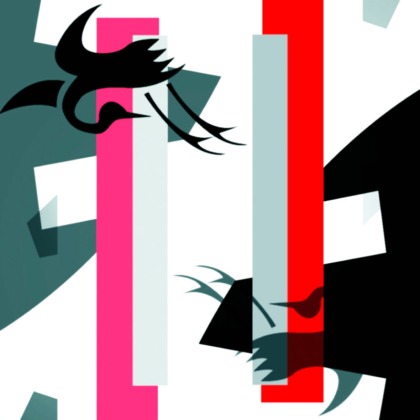
escape from death by jenny meehan graphic print to buy jamartlondon.com© Jenny Meehan. All Rights Reserved
The actual print has less of a colour contrast than how the image shows here on screen. I altered it a bit for the print so it is more subtle.
Knee Replacement Season
Well, I start a new journey soon into the land of knee replacement. So I may be working on some digital images for a while rather than working on larger paintings. I do have some small scale projects I can work on. The months of December, January, February and March tend to be a little more sedentary anyway. So it should work out quite well.
Going into hospital has suddenly reminded me of my “real name”… for I am a Jennifer Meehan not actually a Jenny Meehan. I have used Jenny Meehan since around the age of 18 when I left home. When people call me Jennifer I seem to loose a few years and am reminded of how I was when living at home in my parents house. Well, that is one way to loose a few years I guess! It is odd when you are suddenly referred to with a name you do not use anymore.
Past painting…
Sack of a Great House/Arise, Sleeper
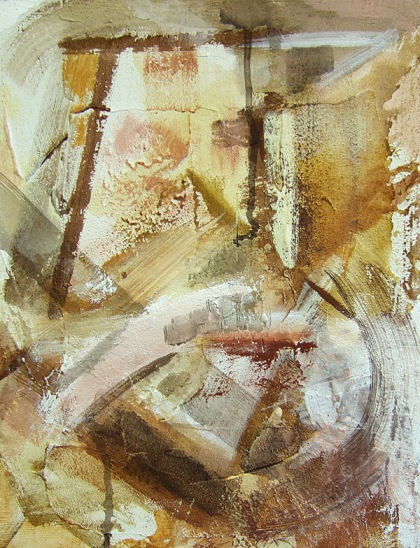
“Arise, Sleeper, Wake/Sack Of A Great House” Jenny Meehan 2010
© Jenny Meehan. All Rights Reserved, DACS
This painting is an early example of my experimentation with texture in my work. It may well be the first time I used fillers of different sorts. That was back in 2010.
Ephesians 5 v14 “This is why it is said: “Wake up, sleeper, rise from the dead, and Christ will shine on you.”
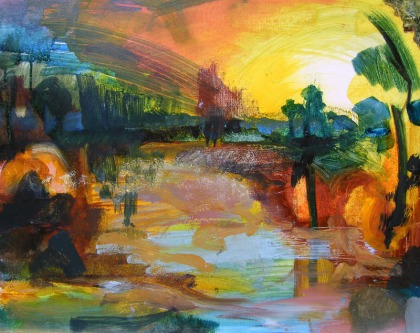
UnderPainting for an Oncoming Vision/The River Within by Jenny Meehan 2010
© Jenny Meehan. All Rights Reserved, DACS
Under Painting for an Oncoming Vision/The River Within is an example of some of my earlier work. In this painting I was experimenting with glazes. Oil on board. In the flesh the painting does radiate light in a very pleasing way. You cannot quite get that from looking at it on a screen.
Interesting information on Gloss and Emulsion Paint
Well, you know I appreciate that this won’t get everyone excited, but for me as a painter when I find nice clear information on paint, I am very happy indeed! Someone mentioned gloss paint to me in conversation and it is not something I have tried, so this maybe something for the new year.
“Gloss or emulsion
When we buy a can of paint we expect to be able to apply it with a brush or roller and for it to dry leaving behind a solid film. To achieve this paints are made up of a mixture of different components. Although paints designed for different purposes will have different formulations, they all have some key features in common.
Paints contain a pigment to give colour, including white; a film former that binds the pigment particles together and binds them to the surface to be painted; a liquid that makes it easier to apply the paint and additives to make the basic paint better to store and to use.
The two main types of paint are gloss and emulsion. (My addition, well, not quite, but for domestic household use, yes!)
Gloss Paint
Gloss paint is widely used because it produces an attractive shiny surface that is so durable that it can be used outside. The binder or film former in gloss paint is called an alkyd resin. This is a long chain polymer made by reacting a vegetable oil such as soya bean or linseed oil with an alcohol and an organic acid. The resin is dissolved in an aliphatic petroleum solvent, so that it can be spread easily. When the solvent evaporates, the oxygen of the air interacts with the resin which results in the formation of cross links between the polymer molecules and produces a strong, dry film.
A typical gloss paint formulation
Component Percentage by mass
Alkyd resin binder 54
Pigment 25
Solvent 17
Additives 4
(Additives might be driers and anti-skin agents)
Emulsion Paint
Some paints are emulsions . They are made up of tiny droplets of liquid polymer binder spread out in, rather than dissolved in water. This emulsion can be spread easily.
The polymer is made by the addition polymerisation of alkene monomers such as ethenyl ethanoate, methyl 2-methylpropenoate and 2-ethylhexyl acrylate. These monomers can be mixed in different proportions before polymerisation to form a co-polymer which has exactly the right properties for the purpose it is to be used for.
After an emulsion paint is applied, the water evaporates and the polymer particles pack closely and fuse together to form a continuous film. The use of water rather than an organic liquid means that emulsion paints produce fewer VOC (volatile organic compounds) when they are used.
A typical emulsion paint formulation
Component Percentage by mass
Co-polymer binder 15 to 23
Pigment (white) 20
Pigment (colour) 0 to 5
Extenders 15 to 25
Water 25 to 50
Additives 2 to 5
(Additives might be antifreeze, dispersing aids, wetting agents, thickeners, biocides, low temperature drying aids, antifoam agent, coalescing solvent, ammonia)”
The above is quoted from: http://resources.schoolscience.co.uk/ICI/14-16/paints/paintch1pg1.html
I am so happy reading this! Crazy, Yes. For sure! Love Paint!
Quotes I like…
This below from http://abstractcritical.com/article/the-language-of-painting/
http://abstractcritical.com/article/the-language-of-painting/
by John Holland
“Though it will deeply pain Mr. Gouk, I agree that art is not a language, except in the most metaphorical way. It’s not true to say that, “If art has a meaning, then it must be a language”; language is a particular conception, and all real languages share certain necessary features,such as modular units that must be arranged according to quite strict syntactical rules if they are to make sense. What are the equivalents in painting of tenses, verbs, word definitions? Any metaphorical application of the word ‘language’ to art (or music) is too vague to be useful. Maths, maybe, is the only thing that might meaningfully be called a non-verbal language.
As Gouk suggests, a work like Finnigan’s Wake pushes the rules about as far as they will go before sense breaks down- which is why, by and large, literature has had to ‘retreat’ since then to more conservative forms. There’s no equivalent in Modernist painting.
Art has meaning, but it lies largely outside language- this is why it fails when it tries to operate in essentially verbally structured contexts like political discourse.”
Art has meaning, but it lies largely outside language- this is why it fails when it tries to operate in essentially verbally structured contexts like political discourse.
Victor Brauner
I have been looking at some work by Victor Brauner recently, who I had not heard of before. Here is some information on him.
Victor Brauner’s multi-media practice is now most closely associated with Surrealism. During his training at the School of Fine Arts in Bucharest, Brauner had in fact developed an expressionist style, which he later abandoned during his involvement with various Dadaist and Surrealist art publications. It was Yves Tanguy who formally introduced Brauner to the Surrealists and instigated his involvement with the movement. His practice, which included painting, drawing, and printmaking, drew from disparate symbolic systems like Tarot Cards, Egyptian hieroglyphics, and ancient Mexican texts. Brauner asserted that all of his paintings were autobiographical in some way. He led a turbulent life of constant displacement; anticipating the danger of World War II, Brauner reduced the dimensions of his canvases such that each could fit in his luggage for emergency travel—he called these his “suitcase paintings.” (quoted from Artsy.net)
And from my reading:
Dialogues; Conversations with European Artists at Mid-Century by Edouard Roditi
An interesting extract:
Victor Brauner interviewed by Edouard Roditi. A small extract from a longer interview.
ER: Do you believe that non formal abstract art can offer an artist a new kind of freedom?
BRAUNER: In theory perhaps, at least as long as it relies on chance to suggest meanings for its formlessness. In practice, however, it generally concerns itself with such problems only superficially and soon degenerates into a style of decoration that lacks any more articulated systems of beliefs, thought and emotion. In any case, such terms as figurative and non-figurative or formal and non formal suggest very superficial categories. An artist such as Paul Klee understood quite properly that he had to try his hand at any style that occurred to his mind, and this is how he managed to leave some works that are figurative and others that are nonfigurative – but all of them equally typical of his very personal genius.
ER So you would not advise an artist to seek too personal a style to which he would remain rigidly faithful in all his work?
BRAUNER : Certainly not. The modern art market requires that an artist specialise and, in the long run, repeat himself too. But what he then produces may no longer illustrate what remains indispensable to him as artistic expression – I mean a sense of adventure, of discovery and perhaps even of danger, of the risk of really making the wrong choice and of losing or destroying himself as an artist. Whenever I face a fresh canvas,I feel like a new man and become an utter stranger in my own eyes. When one faces this mystery of becoming and of self discovery and self-expression as an artist, one can no longer rely very much on what one has already achieved. But this is also why I can never have a very clear long-range plans. I do not want to become a specialist in any strictly limited style or range of subject matter, though I may actually find myself more often preoccupied by some problems or symbols than by others. Nor would I really be able to be such a specialist, even if I wanted. But this problem, fortunately, has never arisen in my life, and this may well be why I continue to feel the need to work and to create, as if I had never yet created anything in the past which I can still recognize as wholly my own”
At the time of this brief interview, Brauner was seriously ill and easily tired. A few weeks later Victor Brauner died and this was his last interview.
Interesting with respect to the matter of repetition, and what a wonderful quote:
Whenever I face a fresh canvas,I feel like a new man and become an utter stranger in my own eyes. When one faces this mystery of becoming and of self discovery and self-expression as an artist, one can no longer rely very much on what one has already achieved.
My own experience for the need for constant jumping into the dark, into the unknown, into the not previously explored avenues of the unfolding process of my painting, and how important it feels NOT to simply do something because it has worked well, or is popular, or has some other reason to be done, finds some agreement here. This may not make commercial sense, however, I ask myself what matters the most and what I personally think more important. Freedom is a key not worth throwing away unless it is absolutely necessary to do so. At the moment I am free to be led by whatever happens next, without needing to know what that whatever will be. I do find that there are distinctive strands in my work, they resurface again and again; it just happens. The art is to look back and consider them from a distance of time having passed, to ask if they have any direction to point one to, and to not force any coherence in one’s work, but simply let it happen.
Suburban Meditations/Painter’s Development Images…
Once more, a look into what caught me when my camera served as my main tool. I am thinking of buying a new camera, but so confused by the choice!!! My extensive archives of imagery lie waiting for resurrection. But it is nice to look back at what I was looking at (and finding interesting) when I took more photographs more than I painted. And then I ask myself what the images are saying to me now. Quite a lot. Of lovely silent words.
Types of metal fixings and neglected structures drew me towards them. Wood and metal were the main materials I took photographs of. I experimented with colour images but in the end presented a lot of my photographs in black and white as the kind of control over colour was too limited with photography, or at least, in my case, with using pretty limited types of photographic equipment and not printing the images myself. I take very few photographs at the present time. I feel I have so many that I have not utilised and engaged with sufficiently. So much material that could bring forth so much. So I have put an end to taking more images at the moment. ( Very occasionally I succumb!) Sometimes I see something I cannot resist, but it is not helpful to try and do too much. We have too many images. This feeling probably accounts for my getting lost (willingly) into abstraction!
There Will Always be a Point at Which We Will Meet
Past Painting and Poem : Bandage Box
Bandage Box
Gently pressed
fabric
laid over a stretched surface,
soaked in milky balm.
I am tenderly
making, building
a new impression with my mind
whose inner wound cannot be bound
but which seeks
to make
new structure.
Jenny Meehan 2013 (written to accompany the above painting of 2013)
There will be some wounding experience with my knee replacement, but wounding with the aim of healing and repair is quite a different matter to wounding with destruction as it’s intent.
And Now…
I have been dwelling on similar material recently… Reflecting on the healing process of painting, because it clearly is a healing process for me. The bringing together, in articulating something, something which I don’t know when I start, but which evolves. The something which is becoming. Bringing into being a painting is like realising an emotion…, or maybe not just emotion, something of the heart; a heart connection and an experience felt. Maybe coming from a memory or experience. That memory need not be explicit and clear but I can still paint from it. Paint from its centre, from the time when it started. It may be from the past but the time doesn’t matter, The main thing is that it is and that I don’t need to ignore it or push it away. So the whole thing about painting for me is that it is about being allowed to be. Being and coming into being. Feeling and experiencing the paint and the material and the process of painting. And for nothing else to matter. There is a space in that which is healing. There is a bringing together and a resolution of something within. There is the fact that it appears and that it now matters. It always mattered but it could not be seen. And there is nothing about that painting which is not me. And there is everything just laid there to see. Which is rewarding. And the work has been hard, not easy. Sometimes easy, in a kind of surprise, but often very hard. But the bringing together of the painting is very rewarding. I feel engaged in life in a way that is essential to my happiness. I think I have written about the psychology of flourishing before on this journal. And that whole thing of “being in the flow” or in your element. I think some of the recent paintings I have been working on this year may touch on both the experience of flow, of happiness and of healing. The relief of coming together.
And here is one of my VERY recent paintings.
This one, “Mending”…It may well acquire an additional title as I continue the phase of contemplation through simple looking for a while. Sometimes over time a painting speaks of something not so obvious at the time of painting, or even just after it.
But this is “Mending” for now.
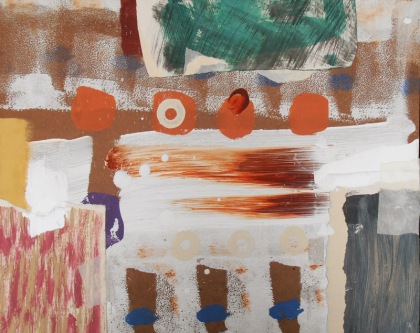
abstract lyrical expressionist british paintings jenny meehan
“Mending” uses a mixture of Keim Optil paint, acrylic paint, and household emulsion. I have also used painted card which is something I have been keen to use for a while. The substrate is hardboard which has a lovely colour which I have left showing in places. There are also some areas of paper tape. The size is just 20x16inches. This is a good size for such experiments as not too big, and I rather like the aspect ratio.
A nice little quote, rather random, but still lovely;
“Conversion, at its root, is not the action performed but the source of that action, the experience of being loved.”
Carroll & Dyckman, quoted from Inviting the Mystic Supporting the Prophet.
That is it for now. Happy Christmas!
